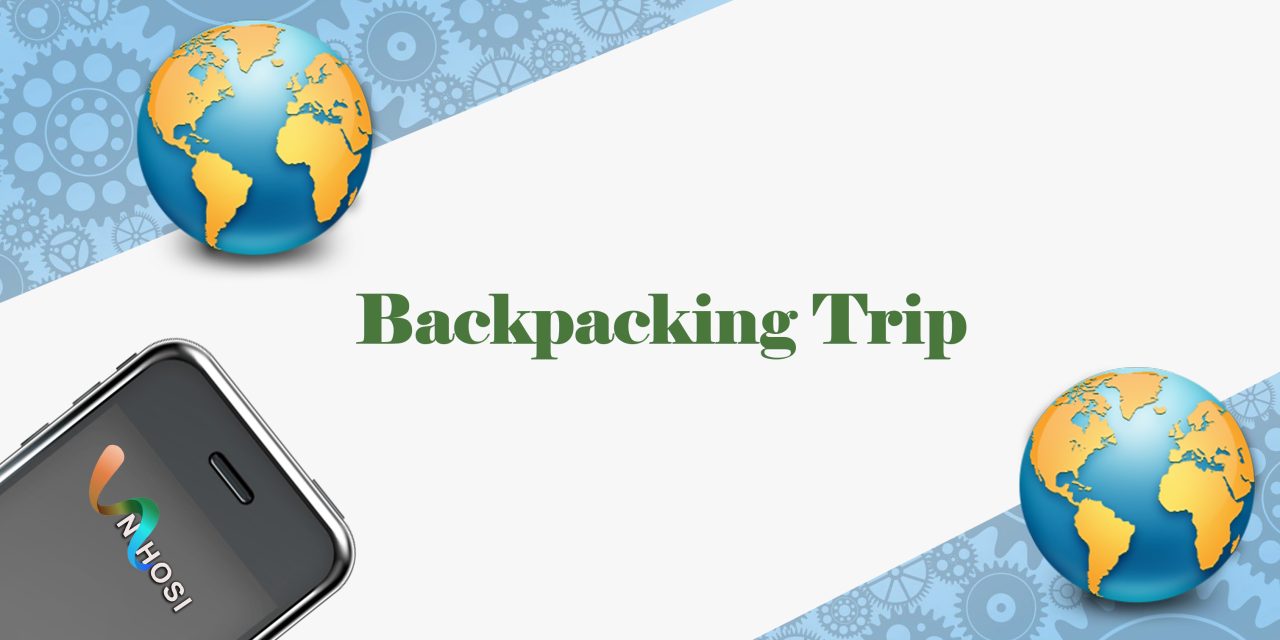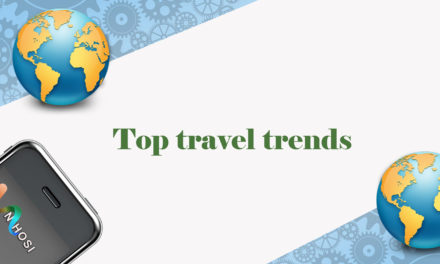If you’ve ever had the dream of traversing through charming medieval towns, sprawling vineyards, or the heart-thumping nightlife of Europe’s most bustling cities, this guide is for you. Here’s your one-stop shop for everything you need to plan the ultimate European backpacking trip.
Setting the Stage: The Backpacking Dream
Backpacking through Europe is a rite of passage for many. This journey has a way of imparting invaluable lessons, exposing the traveller to various cultures, and unveiling the multifaceted charm Europe offers. The big question is – where do you start when planning such an epic adventure?
Preparation is Key: Outline Your Goals
First and foremost, you need to outline your travel goals. Are you more interested in the culture-rich South with its sumptuous cuisines, or does the North with its stunning fjords and modern cities tickle your fancy more? Perhaps you’re more inclined towards Eastern Europe with its intriguing history, or the sun-drenched beaches of the West?
Money Matters: Determining Your Budget
Backpacking through Europe doesn’t have to break the bank. Sure, cities like London and Paris can be expensive, but there are countless inexpensive hostels, eateries, and free attractions that can help balance your budget. Countries like Poland, Hungary, and Portugal offer a more affordable experience.
Setting the Stage: The Backpacking Dream
The concept of backpacking through Europe evokes a sense of wanderlust in the hearts of many travellers. It’s not just about visiting a new country or ticking landmarks off a list; it’s an exploration of diverse cultures, a celebration of historical heritage, and an immersion into distinct culinary traditions.
Europe, with its interwoven tapestry of nations, each boasting a unique identity, presents a multitude of opportunities for backpackers. It could be tracing the enchanting allure of the Northern Lights across Scandinavia, marvelling at the grandeur of Rome’s Colosseum, getting lost amidst the quaint labyrinth of streets in Santorini, or relishing the eclectic nightlife of Berlin. Every stop along the journey unveils a new facet of European charm.
But let’s be real: planning a backpacking trip across Europe can feel daunting, especially for first-time travellers. It’s a continent steeped in history and culture, overflowing with cities and towns worth exploring, all offering their own unique sights, tastes, and experiences. The thought of turning this dream into reality may be overwhelming, but it’s not an insurmountable task.
Our aim with this guide is to simplify this process for you, providing a step-by-step approach to planning your dream trip. Whether it’s deciding the perfect time to visit, mapping your travel route, understanding budget constraints, or packing the right gear, we’ll help you navigate through each decision. By the end of it, you’ll be armed with practical knowledge and a plan that takes you one step closer to embarking on your own European backpacking adventure.
Preparation is Key: Outline Your Goals
Before packing your backpack and hopping on the next flight to Europe, it’s crucial to outline your travel goals. Understanding what you want to get out of this journey can help shape your itinerary, accommodation choices, and even your daily spending limits.
Identify Your Interest Areas
Start by identifying what interests you most. Are you a history buff eager to explore the ancient ruins of Rome, or perhaps the concentration camps in Poland? Maybe you’re a food lover looking forward to indulging in Parisian pastries or Spanish tapas? Or, you might be a nature enthusiast, ready to hike the stunning trails of the Swiss Alps or bask in the pristine beaches of Greece? Identifying these interests can help you prioritise your destinations and activities.
Duration of Your Stay
Next, consider the duration of your backpacking trip. Have a ballpark figure in mind, as this will directly impact how many countries and cities you can reasonably visit. For example, if you plan a month-long adventure, you might want to explore four to five countries thoroughly rather than rushing through ten.
Travel Seasons
Another significant aspect to consider is the time of your travel. Europe’s tourist season peaks in summer (June-August), which means popular sites will be crowded, and prices generally higher. Travelling in the shoulder seasons (April-May and September-October) can be more cost-effective and provide a more relaxed experience. If you’re not averse to colder temperatures, winter (November-March) offers the cheapest travel costs and the unique experience of Europe’s famed Christmas markets.
Planning might seem like a daunting task, but outlining your travel goals in these initial stages will help simplify the rest of your journey, ensuring a more tailored and fulfilling European backpacking experience.
Money Matters: Determining Your Budget
One of the most critical aspects of planning your European backpacking trip is setting a realistic budget. This will heavily influence your decisions, from the choice of destinations and accommodations to the daily spending limits and transportation modes.
Establishing Your Budget
Start by determining how much you can realistically afford to spend on your trip. Consider all potential expenses such as flights, accommodations, meals, sightseeing, local transport, and unforeseen costs. Remember to factor in pre-trip costs such as backpacking gear and travel insurance.
Cost Breakdown
Next, break down your budget into daily spending limits. It’s a good idea to allocate budgets for different categories – accommodations, food, sightseeing, and miscellaneous. It helps maintain control over your expenses and ensures you don’t overspend in one area.
Destination Costs
It’s important to research the costs of your chosen destinations. Western European countries like the UK, France, and Germany are generally more expensive, while Eastern European countries like Poland, Hungary, and the Czech Republic are usually cheaper. Plan to balance your time between more expensive and cheaper countries to stretch your budget further.
Smart Spending
Finally, think about ways you can save money on your trip. Look for free attractions, cook your own meals occasionally, use public transportation instead of taxis, and consider staying in hostels or budget accommodations. Every little saving can contribute to a more extended or enjoyable trip.
Remember, a well-planned budget is the cornerstone of a successful backpacking trip. It might require some time and effort, but it can make the difference between a smooth journey and a stressful one. And most importantly, it gives you the peace of mind to fully immerse in the European experience you’ve been dreaming of.
Count the Days: Decide the Length of Your Trip
Determining the length of your backpacking trip is a pivotal step in your planning process. The duration of your adventure will directly influence your itinerary, budget, and overall travel experience.
Consider Your Travel Goals
Revisit your travel goals when deciding the length of your trip. If your aim is to immerse yourself in a few selected cultures deeply, a longer stay in fewer countries would be ideal. On the other hand, if you wish to get a broader taste of Europe, you might opt for a whirlwind tour through many countries over a shorter period.
Balance Quality and Quantity
While it’s tempting to squeeze as many countries into your itinerary as possible, be careful not to sacrifice depth for breadth. Travelling at breakneck speed can lead to burnout and make your experiences less meaningful. Balance your desire to see more with the need to experience more. Quality should always take precedence over quantity.
Factor in Rest Days
Don’t forget to factor in rest days into your schedule. Backpacking can be physically demanding, and your body will need time to recharge. Rest days also provide a buffer for unexpected events, like bad weather or travel delays. Plus, they give you more time to explore a city at a leisurely pace or even make spontaneous plans.
Work With What You Have
Finally, be realistic with the time you have. If you’re on a tight schedule, don’t overextend yourself by planning too many activities or destinations. You’ll be surprised at how much you can enjoy and learn from a place even with limited time. What’s important is making the most out of your European adventure, regardless of the length of your trip.
In conclusion, take the time to thoughtfully consider the length of your journey. The perfect backpacking trip isn’t about ticking off as many countries as possible; it’s about crafting memorable experiences and achieving your travel goals at a pace that suits you.
Choose Your Path: Picking Your Destinations
With a myriad of stunning cities, picturesque landscapes, and historical sites, choosing where to go in Europe can be a formidable task. However, a well-thought-out selection process can make this daunting task manageable and even enjoyable.
Align with Your Interests
Your interests should be the main driver of your destination selection. Are you an art lover? Cities like Paris, Florence, and Amsterdam might top your list. Are you into history? Rome, Athens, and Berlin are laden with rich historical sites. A fan of the great outdoors? Consider Interlaken, the Scottish Highlands, or the Norwegian fjords. Remember, this trip is about you. Don’t feel compelled to visit a place just because it’s a popular choice.
Research and Inspiration
Look for inspiration everywhere. Read travel blogs, guidebooks, and social media posts. Talk to friends who have travelled to Europe. Use platforms like Pinterest and Instagram to visualise your potential destinations. Then, dive deeper into each location. What are the must-see sites? How traveller-friendly is the city? What unique experiences does it offer?
Budget and Time Constraints
Your budget and time constraints should also play a role in your decision. If you’re on a tight budget, consider spending more time in Eastern Europe where the cost of living is generally lower. If you only have a few weeks, limit your trip to a smaller geographic area to reduce travel time between destinations.
Geographical Routing
Once you have a list of potential destinations, think about their geographical location. It’s more efficient and environmentally friendly to visit cities that are close to each other rather than hopping back and forth across Europe. Consider travelling in a linear or circular route to maximise your time and resources.
Remember, choosing your destinations is a personal process. It’s your journey, so pick the paths that resonate most with you. Europe is a treasure trove of experiences waiting to be discovered, so take your time and choose wisely!
Plotting the Course: Designing Your Itinerary
Once you’ve chosen your destinations, the next step is to design a flexible, well-balanced itinerary. This map of your journey can help you make the most of your time abroad while allowing for spontaneity and rest.
Start with a Broad Plan
Begin with a broad outline of your trip. List down the countries and cities you want to visit and allocate a rough number of days for each. This will provide a skeleton for your itinerary that you can flesh out with more details later.
Research Each Destination
Next, conduct in-depth research on each of your chosen destinations. Make a list of attractions you want to see, activities you want to do, food you want to try, and events you want to attend. Look up opening hours, ticket prices, and location details to help with your planning.
Sequence Your Activities
After that, start sequencing your activities for each day. Begin with a couple of must-do activities, then add in secondary ones. Be realistic with your time—don’t cram too many things in a day. Remember to account for travel time between locations and downtime for meals and rest.
Allow for Flexibility
While planning is essential, don’t schedule every minute of your day. Allow for flexibility. Spontaneous decisions often lead to the most memorable experiences. Plus, this approach allows you to adjust your plan based on weather, unexpected closures, or even just your mood on the day.
Designing your itinerary is a balancing act between planning and spontaneity. It requires time and effort, but the payoff is a smoother, more enriching travel experience. Remember, your itinerary is a guide, not a mandate. Feel free to deviate from it as the spirit of adventure leads you.
Planes, Trains, and Automobiles: Deciding on Transportation
One of the most exciting aspects of a European backpacking trip is the diversity of transportation modes available. Each offers its own unique experiences, and the right choice will depend on your budget, time constraints, and personal preferences.
Travel by Air
Europe boasts numerous budget airlines that offer cheap flights across the continent. Flying is often the quickest way to get from one place to another, which is especially beneficial if you’re tight on time. However, remember that airports are usually located outside of city centres, so factor in the additional time and cost for transfers.
Travel by Rail
Rail travel is a quintessential European experience. It offers the chance to relax and enjoy the scenery while moving from one destination to another. The extensive rail network in Europe, combined with efficient service and various rail pass options like the Eurail Pass, makes train travel a highly feasible and appealing option.
Travel by Road
For those who prefer more flexibility, renting a car or travelling by bus might be the perfect option. It allows you to set your own pace, stop wherever you want, and visit off-the-beaten-path locations that are not easily accessible by train or plane. However, be aware of the costs associated with car rentals, like fuel, tolls, and insurance, and be prepared for the challenge of navigating foreign road rules.
Local Transport
Don’t forget about local transportation in each city. Most European cities have excellent public transportation systems, including metros, trams, and buses. Walking or cycling is also a great way to explore a city and get a feel for its unique rhythm and character.
Overall, there’s no one-size-fits-all answer when it comes to choosing the best mode of transportation for your European backpacking trip. It’s about finding the right balance that fits your travel style, budget, and itinerary.
Pack Like a Pro: What to Bring on Your Adventure
Packing for a European backpacking trip is an art that balances necessity, comfort, and mobility. Remember, you’ll be carrying whatever you pack on your back for days or weeks at a time, so it’s crucial to pack efficiently and sensibly.
Essentials First
Start by packing the essentials: travel documents (passport, ID, driver’s licence, visa, etc.), money and credit cards, phone, charger, and adapters. For accommodation, don’t forget your bookings confirmation details. In addition, a reusable water bottle, first-aid kit, and a map can be lifesavers.
Clothing and Footwear
When it comes to clothing, opt for versatile pieces that you can layer. Europe’s weather can be unpredictable, so it’s good to be prepared for anything. Pack enough underwear and socks, a few tops and bottoms, a warm layer, and a waterproof jacket. As for shoes, go for comfort over style – you’ll likely be walking a lot!
Travel Gear
Your backpack is your most critical piece of travel gear. Invest in a high-quality, comfortable backpack that fits you well and is suitable for the duration of your trip. A travel pillow, earplugs, and an eye mask can also enhance your comfort during long journeys.
Toiletries and Personal Items
Pack travel-sized toiletries and personal items. Most hostels and budget accommodations don’t provide these. Include items like toothpaste, soap, shampoo, deodorant, and a towel. Also, consider your personal hygiene and comfort items, like tissues, wet wipes, and female hygiene products.
Remember, the goal of packing is to bring everything you need and nothing more. Think about each item you pack. If you’re not sure you’ll use it, leave it out. You’ll thank yourself when you’re lugging your backpack around Europe!
Taking Care of Business: Travel Insurance, Visa, and More
Planning a backpacking trip to Europe involves more than just picking destinations and packing a bag. You also need to take care of some critical business, including securing travel insurance, sorting out your visa, and managing your money.
Securing Travel Insurance
Travel insurance is a must for any trip abroad. It can protect you from hefty costs associated with unexpected events like medical emergencies, trip cancellations, or lost belongings. Make sure your policy covers all the countries you plan to visit and the activities you plan to do. Check the fine print for any exclusions and understand the process for making a claim.
Sorting Out Your Visa
Depending on your nationality, you may need a visa to visit certain European countries. The Schengen Area, for example, allows for free movement across 26 countries, but it requires a visa for many non-European citizens. Always check visa requirements well in advance, as the process can take several weeks or even months.
Managing Your Money
It’s crucial to have a plan for how you’ll manage your money while travelling. Inform your bank of your travel plans to avoid any issues with your cards. Consider getting a travel-friendly bank card that offers low foreign transaction fees. It’s also a good idea to have some local currency for each country you’re visiting, especially for small purchases and places that don’t accept cards.
Health and Safety Precautions
Finally, take health and safety precautions before you go. Check if you need any vaccinations for your destinations. Research local customs and laws to avoid unwitting faux pas or legal issues. Register your trip with your country’s embassy, if possible, to receive travel advisories and assistance if necessary.
Taking care of these business aspects might not be the most exciting part of planning your trip, but it’s essential for a smooth and hassle-free adventure. Get them out of the way early, and you’ll be able to focus on the fun parts of your journey.
The Ins and Outs: Understanding Local Customs
Immersing yourself in the local culture is one of the joys of backpacking through Europe. To make the most of this experience and show respect for the people you encounter, it’s important to understand and adhere to local customs and traditions.
Language Basics
While English is commonly spoken in many parts of Europe, locals appreciate it when tourists make an effort to learn some phrases in the local language. Simple phrases like ‘hello’, ‘thank you’, ‘please’, and ‘I’m sorry, I don’t speak [language]’ can go a long way.
Etiquette and Manners
Each country in Europe has its own etiquette and manners. For instance, in France, it’s customary to greet people with a kiss on both cheeks, while in Germany, a firm handshake is standard. It’s also good to note the local dining etiquette, such as tipping customs, whether it’s acceptable to eat with your hands, and if you should wait for a toast before drinking.
Cultural Sensitivities
Europe is rich in cultural diversity, which includes a variety of religious and social customs. In some places, modest dress is required, especially in religious sites. During your research, look out for any local sensitivities to avoid accidentally causing offense.
Local Laws
Remember, laws that apply at home may not apply in the countries you’re visiting and vice versa. For example, in some European cities, it’s illegal to eat or drink in public places. Familiarize yourself with the local laws to avoid any unnecessary trouble.
Understanding local customs not only enriches your travel experience but also shows respect for the cultures you are visiting. Remember, you’re a guest in these countries, and demonstrating awareness of local customs can go a long way in fostering positive interactions with the locals.
Stay Connected: Managing Communications
While a European backpacking trip can be a chance to disconnect, most of us need some level of connectivity, whether to stay in touch with loved ones, share our experiences on social media, or manage practicalities like bookings and navigation. Let’s discuss how to manage your communications during your trip.
International Roaming
One option is to use your current mobile plan’s international roaming. However, this can be costly, so check the rates before you travel. Some providers offer international packages that can reduce the cost.
Local SIM Cards
A more cost-effective solution can be to purchase a local SIM card once you arrive in Europe. This will give you a local number and typically includes calls, text messages, and data. Just make sure your phone is unlocked to accept foreign SIM cards.
Global SIM Cards or E-SIMs
Alternatively, you could opt for a global SIM card or an E-SIM, which works in multiple countries. This could be a good option if you’re travelling through several countries and want to avoid the hassle of getting a new SIM in each one.
WiFi
Most cities, hostels, cafes, and even public spaces in Europe offer free WiFi, which you can use to connect your devices. To stay safe on public WiFi, consider using a Virtual Private Network (VPN) to encrypt your online activity.
Communication Apps
Apps like Skype, WhatsApp, and Viber can keep you in touch with people back home without incurring SMS or call charges. These apps use data or WiFi to send messages or make calls, so they can be used anywhere you have internet access.
Regardless of the options you choose, it’s essential to plan how you’ll manage your communications while travelling. That way, you can keep in touch without it costing an arm and a leg.
Let’s Talk Money: Handling Your Finances
Managing your money wisely is crucial for a successful backpacking trip. This doesn’t just mean budgeting – though that’s important too. It also involves understanding the best ways to access and use your money while abroad. Let’s look at some of the key considerations.
Understand the Currency
First, familiarize yourself with the local currency in each country you’ll be visiting. While the euro is common across many European countries, others, like the UK and Switzerland, use their own currency. Understand the exchange rates and what the different notes and coins look like.
Using Debit and Credit Cards
Debit and credit cards are widely accepted throughout Europe, making them a convenient way to pay for things. Be aware, though, that foreign transaction fees can add up. Consider getting a card that doesn’t charge these fees or use your card mainly for withdrawals and larger purchases.
Carrying Cash
It’s always a good idea to carry some cash for smaller expenses, or in case cards aren’t accepted. However, don’t carry more cash than you need to avoid losing it or falling victim to theft. Using ATMs to withdraw cash as you go is a good strategy.
Mobile Payments
Mobile payment services like Apple Pay, Google Pay, or PayPal can also be convenient for handling your finances while travelling. They’re widely accepted in many parts of Europe, especially in larger cities.
Keep Your Money Safe
Regardless of how you choose to handle your finances, keeping your money safe is paramount. Use a money belt or a secure part of your backpack to store your money. Also, keep a separate note of your card details and emergency phone numbers in case they get lost or stolen.
Effectively managing your finances while backpacking in Europe will give you peace of mind and help ensure a smooth journey. Plan ahead and make informed decisions about how to access and use your money abroad.
On the Move: Navigating Your Destinations
Getting around in a new place can be both thrilling and challenging. As a backpacker, you’ll likely be using a variety of transport methods, from trains and buses to walking or cycling. Let’s discuss some tips for navigating your destinations effectively.
Public Transportation
Most European cities have efficient public transportation systems, including buses, trams, and metros. Research how these work in each of your destinations, including routes, schedules, and ticket prices. Consider getting a transport card if you’re staying in one city for a while.
Trains and Buses
Trains and buses are convenient for intercity travel in Europe. Services like Eurail and FlixBus offer extensive networks across the continent. Remember to book in advance, especially for longer journeys, as tickets can sell out.
Cycling and Walking
Many European cities are bike-friendly and offer bike-sharing schemes. Walking is also a great way to explore and get a feel for a new place. Just make sure you have a reliable map – digital or paper.
Navigation Apps
There are plenty of navigation apps that can help you find your way around. Google Maps is a popular choice, but don’t overlook local apps, which may have more detailed information. Just remember, using these apps can eat into your data allowance.
Taxis and Ride-Sharing
Taxis can be a convenient but more expensive option. Ride-sharing services like Uber are available in many European cities and can sometimes be cheaper than traditional taxis. Always make sure you’re getting into a licensed vehicle for your safety.
Getting around in a new place is part of the adventure of backpacking. With some preparation and the right tools, you can navigate your destinations like a pro.
Savour the Moment: Documenting Your Journey
Embarking on a European backpacking adventure is a significant life event. It’s a journey filled with new experiences and memories that you’ll want to cherish for years to come. Documenting your journey is a great way to do this. Let’s discuss some creative and effective ways to capture the essence of your trip.
Journaling
Keeping a travel journal is a classic way to document your experiences. Write down your impressions, thoughts, and anecdotes, and glue in tickets, postcards, and other memorabilia. This can become a valuable keepsake of your journey.
Photography
Capturing your journey through photos is another fantastic way to document your trip. Whether you’re using a DSLR, a point-and-shoot camera, or your smartphone, the key is to capture the moments that mean the most to you. Don’t forget to backup your photos regularly!
Blogging or Vlogging
If you enjoy writing or filming, consider starting a travel blog or vlog. Share your experiences, tips, and insights with a wider audience. Platforms like WordPress for blogging or YouTube for vlogging can be a great start.
Social Media
Social media platforms like Instagram, Facebook, and Snapchat can also be a way to share your journey with friends, family, and other travellers. Just remember not to get so caught up in documenting the trip that you forget to enjoy the experience itself!
Collecting Souvenirs
Finally, collecting small souvenirs from each place you visit can be a tangible way to remember your trip. Whether it’s a postcard, a local craft, or a piece of jewellery, it should be something that sparks joy and evokes memories of the place.
No matter how you choose to document your journey, make sure it’s a way that lets you relive and share the wonder of your European backpacking adventure.
Safety First: Tips for a Safe Journey
Safety is paramount when travelling, particularly when backpacking across different countries. Being in unfamiliar environments can bring risks, but with some preparation and vigilance, you can ensure your journey is safe and enjoyable. Let’s discuss some key safety tips.
Research Your Destinations
Before you head to any new place, research it thoroughly. Know the safe and risky areas, local customs, common scams, emergency numbers, and nearest embassies or consulates. Knowledge is power when it comes to safety.
Travel Insurance
Don’t overlook travel insurance. It can cover medical expenses, trip cancellations, lost luggage, and more. Make sure your policy covers all the activities you plan to do.
Keep Your Belongings Secure
Keep your important belongings – passport, money, credit cards, and electronics – secure at all times. Use lockers or safes where available, and never leave your things unattended. It can also be helpful to use anti-theft backpacks or money belts.
Stay Connected
Keep in touch with friends or family back home. Share your itinerary with them and check in regularly. This way, someone always knows where you are.
Take Care of Your Health
Take care of your physical health. Stay hydrated, eat well, get enough sleep, and avoid excessive alcohol. If you’re feeling unwell, don’t hesitate to seek medical help.
Above all, trust your instincts. If something feels off, it probably is. Stay alert and aware of your surroundings, and don’t take unnecessary risks. Safety is a top priority in making your European backpacking adventure a successful one.
In Conclusion: Your Adventure Awaits
Planning a European backpacking trip can seem daunting at first, with many factors to consider. But remember, the aim is to enjoy a memorable adventure that brings new experiences and enriches your understanding of the world.
From setting your goals and budget, choosing your destinations, determining your route, packing, taking care of formalities, understanding local customs, handling communications and finances, navigating your destinations, documenting your journey, to ensuring your safety – each step plays an integral role in your trip’s success.
It may require some work, research, and careful planning, but the rewards will far outweigh the effort. Take these steps to heart, prepare thoroughly, and you’re on your way to an incredible European adventure. Happy travels!
Frequently Asked Questions
What is the best time to go backpacking in Europe?
Europe can be enjoyed all year round, but the best time would typically be during the spring (April to June) and autumn (September to October) when the weather is mild, and the tourist crowds are smaller.
How much money should I budget for a European backpacking trip?
This depends on your travel style, destinations, and duration of the trip. As a rough guide, budget backpackers often spend between €50 – €100 per day, including accommodation, meals, transportation, and activities.
What should I pack for a backpacking trip in Europe?
Key items to pack include a good-quality backpack, comfortable shoes, clothing suitable for the weather, travel documents, toiletries, a travel towel, a universal adapter, and a first aid kit. It’s best to pack light and only take essentials.
Do I need travel insurance for a backpacking trip in Europe?
Yes, travel insurance is strongly recommended. It can cover unexpected costs like medical expenses, trip cancellations, or lost luggage. Make sure your policy covers all the activities you plan to do.
Do I need a visa for my European backpacking trip?
This depends on your nationality and the countries you plan to visit. Many countries allow tourists to stay for up to 90 days without a visa. Always check the visa requirements well in advance of your trip.











Subscribe To Our Newsletter
Join our mailing list to receive the latest news and updates from our team.
You have Successfully Subscribed!